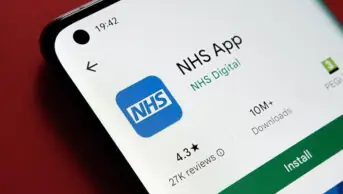
shutterstock.com
The electronic prescription service (EPS) has saved pharmacies £60m over the past three years according to an audit by NHS Digital.
It found that pharmacists also reported a saving on average of 54 minutes each day as a result of faster dispensing under EPS and a time saving of 43 minutes each day as a result of making fewer trips to practices to collect paper prescription forms.
The audit, which sought views from GP practices, pharmacists, and patients, calculated that the NHS overall had saved £130m per year since the EPS’s introduction in 2013, with GP practices reporting the biggest savings, of around £327m in that time.
NHS Digital said that 72% of patients said their medicines were “ready and waiting for them when they arrived at their pharmacy”, with the average prescription collection around 20 minutes quicker under the EPS system than previously.
Over the past three years, NHS Digital calculated the system had saved patients almost £75 million and this meant patients needed to make fewer return trips to pharmacies as a result of their medications being out of stock.
NHS Digital stated the time EPS saved the average GP practice, “allow staff to have more time to care for patients, particularly during the winter months when there is more demand for their services”.
The audit calculated that it takes pharmacy staff 7.33 seconds less per item to produce a prescription label from an EPS script than from a paper prescription.
Robbie Turner, director for England at the Royal Pharmaceutical Society, said EPS had provided “a whole host of benefits to patients, pharmacists and GPs and this audit helped confirm the success of the project”.
“Pharmacists have saved time, not least from verifying handwritten prescriptions, but the greatly improved workflow, which means that staff have more time to spend with patients helping them get the best out of their medicines,” he said.
Luvjit Kandula, chief officer of Leicestershire and Rutland Local Pharmaceutical Committee said: “The benefits relating to EPS include a reduced impact on pharmacies in terms of collecting the prescriptions and helping to manage the workload more efficiently.
“EPS allows more time to prepare prescriptions in advance particularly when electronic repeat dispensing is adopted.”
Kandula added that as further work is being planned to improve uptake of EPS and repeat dispensing, “this will further improve the patient experience and free up more time for clinicians to focus on medicines optimisation and service delivery”.
NHS Digital has produced a web tool that will calculate the benefits of using the EPS for individual dispensers and prescribers.

